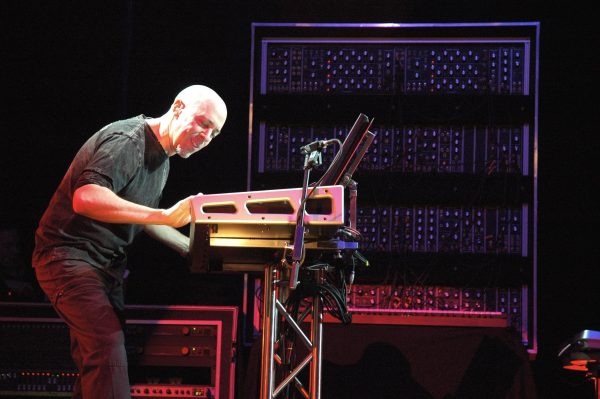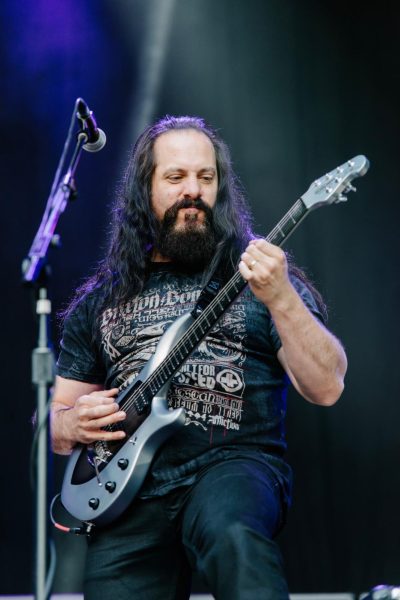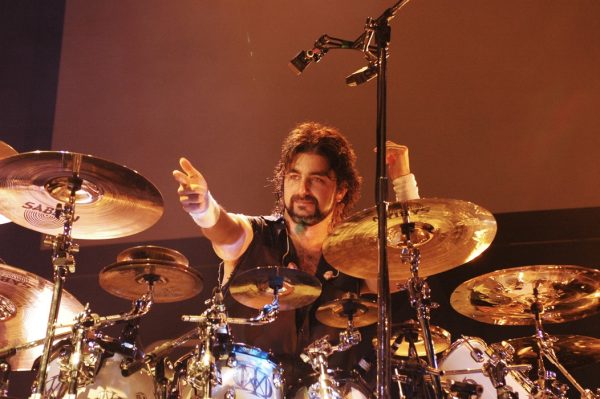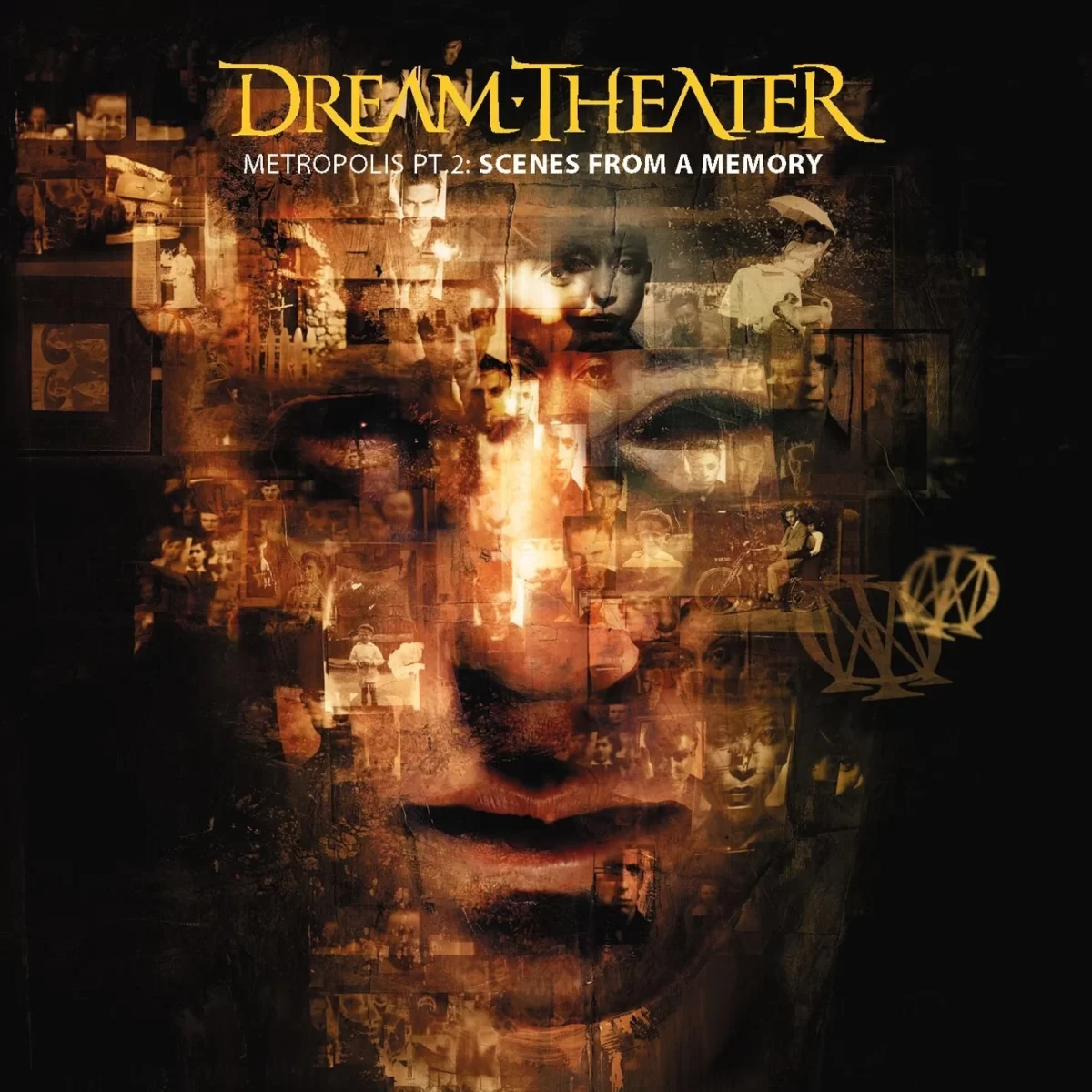Dream Theater released its second album “Images and Words” June 30, 1992. The album would go down as the band’s commercial breakthrough, even landing a spot on Rolling Stone’s list of the Top 100 Greatest Metal Albums of All Time.
In the album “Images and Words,” Dream Theater showed off its songwriting abilities with diverse, interesting songs like “Pull Me Under,” “Take the Time,” “Under a Glass Moon” and, most notably, “Metropolis – Part I: ‘The Miracle and the Sleeper.’”
Featuring numerous time signature changes, guitar, bass, keyboard solos and vocals broken up by long segments of instrumentation, this off-the-wall, nine-and-a-half-minute song defined Dream Theater’s sound.
While the song’s lyrics are abstract and hard to read, the music makes up for it. It pushes the boundaries of what metal can sound like by using different sounds and instruments to create a coherent, yet chaotic song. To this day, “Metropolis – Part I” is one of the band’s greatest songs not only for its quality but also for how it paved the way for the band’s future music.
This leaves the question of that “Part I” label. Where was the band going to take this series they created, and what would they do with it?
“Scenes from a Memory”
“Metropolis Pt. 2: Scenes from a Memory,” released Oct. 26, 1999, is the fifth album by progressive metal pioneer band Dream Theater. The band consists of five members. John Petrucci on guitar and backing vocals, Mike Portnoy on drums, John Myung on bass, Jordan Rudess on keyboard and James LaBrie on lead vocals. This is the first Dream Theater album with Rudess, joining shortly before the recording of the album started.
“Metropolis Pt. 2” was the band’s first concept album, meaning the songs tell one consistent story throughout. While the album is not a direct sequel to “Metropolis Part I: ‘The Miracle and the Sleeper,’’ it uses the same general concepts as “Metropolis Part I.” It turns a song that was very abstract and vague into a comprehensible story about a man named Nicholas and the discovery of his past life as Victoria Page.

“Metropolis Pt. 2” is told in two “acts” like a play, and each song has a different scene number at the beginning of its title. It’s like a big, dramatic rock opera, with each song progressing the story of a man trying to figure out more about his past life.
Interestingly, there was no original plan to make a sequel to “Metropolis – Part I.” The band members only had the idea of a sequel when they recorded a 21-minute-long song titled “Metropolis Pt. 2.” Eventually, the band went back to BearTracks Studios in Suffern, NY, to record the new album, the same studio where it recorded “Images and Words.” After the commercial failure of its previous album, “Falling into Infinity,” the record label gave the band free rein over the new album’s direction, allowing the band members to create the sequel fans had been asking for since 1992.
Act I:
“Scene One: Regression” is the first song on the album. The song opens with a ticking clock and a hypnotherapist speaking to the main character of the album, Nicholas. The hypnotherapist begins to count down from 10. As he does, his voice fades out and is replaced with an acoustic guitar and the first set of singing from LaBrie.
It is a very subversive introduction for a metal record. The calmness is real, and the listener truly feels as though they’re in a safe place where they can relax. It’s a fantastic introduction to an album filled with subversive songwriting. It especially works in this song, as it allows the listener to pay attention to the lyrics, which start our story off by mentioning our second character, Victoria.
The song seamlessly transitions into “Scene Two: I. Overture 1928,” the first instrumental of the album. There’s a slow fade-in of the electric guitars, drums and keyboard until it reaches this big climax. When it does, the band fires on all cylinders with a clean, clear metal instrumentation. Petrucci and Rudess take the lead on this song, each giving excellent, melodic solos that push the song forward, all while the song keeps building and building until it transitions into the next song.

“Scene Two: II. Strange Déjà Vu” is where the story begins to unfold. Nicholas describes seeing a woman. He has never seen her before but subconsciously recognizes her, eventually coming to the conclusion that he is the reincarnation of this woman, Victoria. The more Nicholas sees her, the more he is haunted by her until he decides he must find out what happened to her.
Musically, this song’s strength is allowing the vocals to be the centerpoint. Even though the instrumentals are great, LaBrie leads this song so the lyrics can reach the listener. LaBrie gets a lot of flack for his high-pitched, opera-like vocals, which confuses me, as a lot of the staple metal bands, like Iron Maiden and Judas Priest, have similar vocals.
LaBrie is a perfect fit for the band and has always been. The band has always sounded “clean,” with every instrument audible with very little distortion. It wouldn’t make sense for harsh vocals to be in a band like this, and LaBrie owns every song on the album, especially those with very exposed singing parts, like the next song, “Scene Three: I. Through My Words.”
This song is just singing with a soft piano in the background. It’s a transition song, but it makes itself worthwhile with its calming atmosphere. It’s a palette cleanser, as the next song, “Scene Three: II. Fatal Tragedy,” brings the listener back in with heavy instrumentals and lyrics.
This is where the album begins to slowly shift to sound like a metal record, with big booming guitar riffs and large tempo increases. It’s such a dramatic shift, and for good reason, as the story begins to unfold even more.
As Nicholas learns more about Victoria, he realizes she was murdered. The more he begins to look into who Victoria was, the more he discovers about her and the more the situation complicates. This continues even more as we flow into the next song, “Scene Four: Beyond This Life.”
“Scene Four: Beyond This Life” is the first song on the album that goes over 10 minutes, and it makes use of every second. The song sees Nicholas being able to recall that Victoria began distancing herself from her lover, Julian Baynes, because of his drinking and gambling addictions. Because of this, Victoria seeks out Julian’s brother, Edward Baynes, and begins an affair with him. Nicholas assumes Julian murdered her out of jealousy and then killed himself, a story backed up by a newspaper article covering the events, which cites a witness’ testimony.

This information comes to the listener while the band plays the heaviest song so far, with big guitar riffs and a large presence of double bass. There are slow, mellow moments to break up the chugging guitar riffs and double bass, but it quickly goes back into being one of the biggest head-bobbing songs on the album. There is an extended instrumental in the back half of the song, and it especially just goes off with wailing synths and a guitar solo that is just so weird but so good at the same time.
The song ends with an acoustic outro and transitions into “Scene Five: Through Her Eyes,” a beautiful piano and acoustic guitar song that tugs on the listener’s heartstrings. It is such a beautiful song, especially with the background vocals by Theresa Thomason. Her vocals add so much to this song.
In the song, Nicholas realizes he’ll never find peace until he figures out what really happened to Victoria. This inner struggle he finds within himself, between his life and Victoria’s, is so fleshed out. This song is a perfect example of the narrative and the music coming together so well, and it helps the listener catch up on the story before fading out.
Act II:
The next song, “Scene Six: Home,” is the longest song on the album as it sees a shift in the music and the perspective of the story.
The song starts slow with a sitar strumming in the background. Then, the bass and drums come in, and it all builds into one of my favorite guitar riffs ever. The main guitar riff of this song is heavy and weird, but it works well to establish the confusing and weird situation the listener is in when we shift perspectives to Julian and Edward.
The song switches perspectives, directly describing Julian’s addictions to cocaine and gambling, which drives Victoria away from him. Edward feels guilty about deceiving his brother but decides his love for Victoria is greater than his guilt, and he seduces her when she is vulnerable following her breakup.

The entire song is a trip down this ever-increasing rabbit hole this story has become. Even though this is the longest song on the album, coming in at almost 13 minutes, it goes by quickly with the amount of different instrumentals, styles and fantastic performances by all the band members.
The fantastic performances continue into the next song, “Scene Seven: I. The Dance of Eternity.” This six-minute instrumental is one of the band’s most infamous songs, as it is a song that changes time signature over 100 times. The song is a testament to the band’s songwriting as well as the technical skill they have over their instruments.
The drums, bass, keyboard and guitar all have standout moments in this song, with off-the-wall bass solos and out-of-nowhere ragtime piano parts, this song is as chaotic as it is impressive. This song really is the band showing off how good they are at their instruments while also being a well-written, enjoyable song. As a listener, you are always on your toes as you never know where the band is going to go next, and right when the song reaches its climax, it seamlessly transitions into the next song.
“Scene Seven: II. One Last Time” is where the narrative begins to wrap up. After visiting Edward’s old house, Nicholas believes he has solved the mystery. Julian tried to beg Victoria for forgiveness, and when she told him no, he killed both her and Edward and positioned himself as the witness in the newspaper article.
The music also begins to repeat similar melodies from previous songs, a motif common in concept albums, with a melodic guitar solo and a soft piano part leading the vocals until it ends. It’s another short transition song, but it plays another important part as a palette cleanser and begins to wrap up the story as we reach our climax.
“Scene Eight: The Spirit Carries On” is the penultimate song of the album and serves as the climax of the story. Nicholas comes to terms with what has happened and bids farewell to Victoria. It serves as both a reflection of what has happened and as another progression in the plot.
This song gives me a lot of strong emotions, as it is one of the best metal ballads ever created. The slow acoustic and piano intro slowly builds and builds into my favorite guitar solo by Petrucci, and it ends on this big moment with a choir. It gives me chills every time, especially as Labrie sings his heart out, repeating the exact same lyrics the album opens with. Even if the listener has no idea what is going on in the story, this song’s lyrics stand so strong on their own I guarantee they’ll make any listener emotional.
After, we come to the last song on the album, “Scene Nine: Finally Free.”
The song begins with the hypnotherapist telling Nicholas to open his eyes. After this, the narrative then cuts to Edward’s perspective, revealing he wished his romance with Victoria was more than a simple affair.
With this, the music becomes a lot more sinister, the calm piano turning into sinister horns. This leads us to Victoria beginning to reconcile with Julian again, only for Edward to confront the two of them, murdering them, staging the scene and assuming the role of the witness for the newspaper column.

All of this happens behind an instrumental block, where Victoria and Julian are heard screaming, only for it to be silenced by a gunshot. It is such a haunting moment that includes Edward telling Victoria to “open her eyes” before killing her, echoing the same words the hypnotherapist used to wake Nicholas from his hypnotic trance.
The album ends with this improvised outro that is fantastic. Portnoy kills it here, especially since Portnoy claims each time he plays this part, it’s different. It’s a powerful, haunting instrumental that leads to the end of the story, where Nicholas arrives home, followed by the hypnotherapist. Nicholas is startled by another request to “open his eyes” before the album cuts and concludes on phonographic static, the same static heard in the band’s next album, “Six Degrees of Inner Turbulence.”
Conclusion:
I have a hard time coming up with a general thought with this album. Every time I go up to someone, and they ask me about this album, a lot of random jargon comes out. The best way I can describe my overall feelings is to look at the vlogs made during the recording of the album.
As stated earlier, the band recorded the album at BearTrack Studios, but I’ll add that Portnoy made a few short video clips of their time there. These vlogs, recorded May 11, 1999, show the band excited and passionate to create something new while paying homage to other works of art that inspired them.

Dream Theater is a band that makes music adjacent to its name. It is large-scale, theatrical music that takes the listener to places they have never seen before. It helps that all the members are masters of their respective instruments, but it mostly has to do with each member thinking outside the box and continually pushing the boundaries of what metal can be.
It’s albums like this people look to as benchmarks in musical history. It may not be as widely celebrated as other benchmark metal albums such as “Black Sabbath” or “Master of Puppets,” but it definitely inspired a new generation of metal musicians to push themselves technically and creatively while still holding up on its own 25 years later.
“Images and Words” changed the metal landscape when it dropped, establishing Dream Theater not only as the creator of progressive metal but also as the leader of it. With “Scenes from a Memory,” Dream Theater did it again, not only starting a new chapter in the development of metal music, but creating one of the best metal albums ever made.








